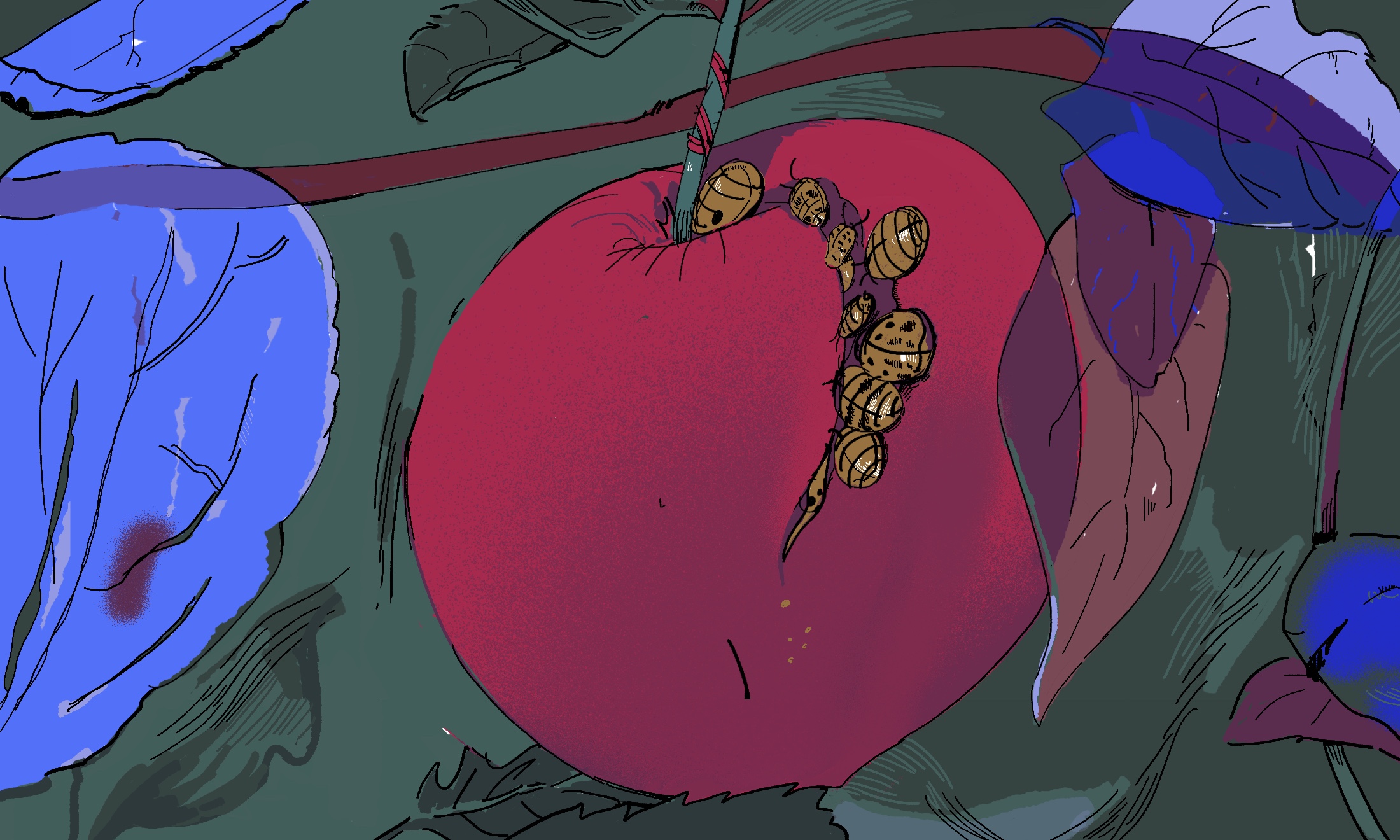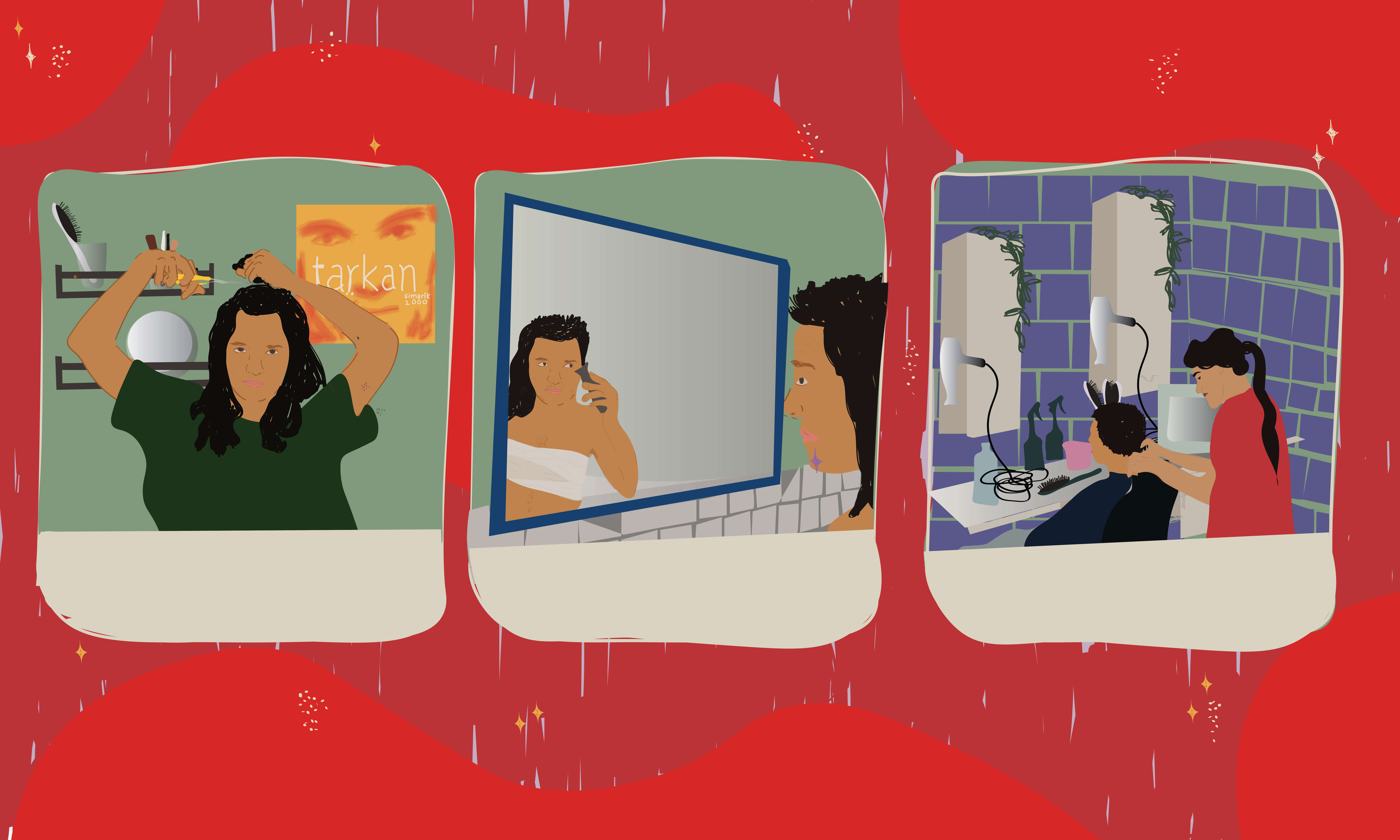
Illustration by Naomi Gennery
Mainstream media representations of Singapore still more often than not oscillates between one or the other: extreme wealth and hyper-capitalism (one mansion recently set a record for selling at £138 million) or a multicultural melting pot. But Sarong Party Girls (SPG), a debut novel out for the first time in the UK by Singaporean-American author Cheryl Lu-Lien Tan, aims to shed light on an oft overlooked side of the region.
Likened to Jane Austen’s Emma set in modern Asia, it explores a young woman’s rise in the glitzy, moneyed city, where old traditions clash with heady modern materialism. Told from the perspective of ambitious Jazzy, she hatches a plan for her and best friends to improve her social status in society as her 27th birthday looms, prowling Singapore’s bars and nightclubs in an effort to snare rich expat white men (ang moh). It takes its title from a disparaging term used in Singapore to describe local Asian women who exclusively date ang moh. The debut novel was in part inspired by Cheryl’s experience when she was fired from the Wall Street Journal and moved back to Singapore to discover her newly divorced friends in their 30s were hanging out at SPG bars indulging in the hedonistic lifestyle underpinned by the embrace of materialism and colonial ideals.
Speaking to Cheryl over the phone, she says the book is “a darkly comic way of looking at what it can be like to be a modern woman in Asia.” She’s also keen to stress Jazzy’s mindset isn’t necessarily representative of all Singaporean women, the protagonist is meant to be a satirical look at a certain segment of society in Singapore – particularly the nightlife.
But beneath the dizzying world of bars and clubs and status obsession, it’s a subversive critique of Singapore’s gender and racial hierarchy and the hangover from colonial rule. As Jazzy runs around Singapore in a desperate effort to secure a white husband, we see her hindered daily by misogyny, patriarchal attitudes and overt discrimination at both work and play. From business deals at Singapore’s karaoke bar-cum-brothels or during a dinner party scene when a character reveals that his dinner companion is a trafficked sex slave (based on the author’s real-life encounter), sexual exploitation and hyper-masculine businessmen are rife throughout the novel. We spoke to Cheryl to unpack the to unpack the lives of Singapore’s sarong party girls.
What is it that initially intrigued you about these women and the way they approach their sex lives?
When I was growing up, SPG was a very derogatory term. Back then, you would see specific bars that were called SPG bars because they were the ones where local women would meet expat men. Much later, when I was back in Singapore researching my first book, I reconnected with some of my childhood girlfriends who stayed in Singapore. They’d married in their early 20s and had children but in their early 30s, some were divorced and found themselves suddenly back on the market. The first time around, they married nice Singaporean boys but when I met them, they were said they were done with the patriarchy, playing the role of the good Singaporean wife and they now declared themselves modern SPGs. I started meeting them in bars and clubs as that was where they hung out and as I started to see this subculture unfold, I was fascinated by being a fly on the wall.
One night, a friend jokingly – or not jokingly – said the ultimate goal of an SPG is having a Chanel baby [a half Singaporean, half expat baby]. The moment she said that, I wrote it down as that term alone said so much about materialism and the whole SPG subculture. Because I’d been around Singaporean society for decades to then becoming acquainted (with the SPG world) in a very personal way because my friends declared themselves modern SPGs, I thought to myself I have to write a book about this.
How much is the fetishisation of mixed-race babies in Singapore a colonial hangover?
It’s such a status symbol for them. I disagree with it and I don’t buy into it, so I thought it was interesting to inhabit Jazzy to understand where she came from. It wasn’t about skin colour specifically. It was about power.
In a way, you’re examining the stain of colonialism and how that can linger decades since Singapore’s been independent. Singapore is a place that very much embraces British culture. Our colonial time is very much looked upon fondly – we have great schools and various monuments around the city so the term SPG and the existence of it was a way of looking at this postcolonial set up and what can linger long after the British left.
Do you think the book is an accurate reflection of how things really are for Singaporean women?
Singapore is very modern but also traditional in many ways. Traditional expectations are gradually changing as it is in the rest of the world but getting your kids properly married and encouraged to have grandchildren is emphasised heavily in Singapore. It’s no different to the main goal in Jane Austen books where marriage is of great importance. It’s the ultimate prize in society if you’ve managed to do that well. I wanted to show that it’s still of great importance to have succeeded and Singapore is very much about succeeding.
Jazzy is a complex character. She’s very unlikeable, very brazenly ambitious but at the heart of it is a raging feminist. In her own way, SPG is her way of rejecting the patriarchy and the world she grew up in but she rejects her grandparents’ culture, preferring to choose her own path and the path she chooses is to be an SPG.
“One night, a friend jokingly – or not jokingly – said the ultimate goal of an SPG is having a Chanel baby [a half Singaporean, half expat baby]”
Cheryl Lu-Lien
It’s written in Singlish patois which is like English spoken in Singapore, incorporating elements of Chinese and Malay. What was the reason for that?
I love Singlish because it’s direct. A lot of people like to think of Singapore as sterile, pristine and a little boring but Singlish is one of our big cultural identifiers. It’s a cheeky, brash crude language that I’ve always really loved. I really wanted this book to showcase it. In a way, it’s like a love letter to Singlish.
There are varying degrees of Singlish at work or at school but at home, we might speak something much stronger. If my mother was calling me now, I’d switch back to that language. Jazzy is someone who knows she has to speak ‘proper’ English as she has a ‘proper’ job but she does speak varying degrees of Singlish. And especially as this book takes place a lot with her friends, I wanted it to be authentic like her. If she spoke proper Queen’s English, she wouldn’t come across right.
Jazzy’s boss judges his assistants by their appearances and she constantly worries about being shafted to a dead-end department where all her bosses’ previous assistants end up after reaching the age of 24. It’s such a testament to the anxiety of growing older.
I wanted her workplace experience to reflect the limited choice if you’re not a particularly rich, book smart woman in Singapore and you have to work perhaps a lower level job and what that can mean. Because at a certain point, it may be that you realise your best way to a good life and financial stability is to marry well.
Jazzy is hindered daily running through Singapore, trying to find her way out of it and being blocked every way. I wanted her to encounter the disappointments that you would face if you’re trying to be a modern woman in Asia where you’re confronted with patriarchal attitudes.
Sarong Party Girls is now available to purchase in the UK for the first time









